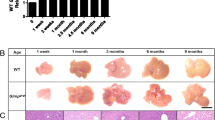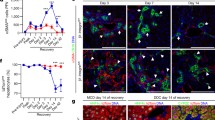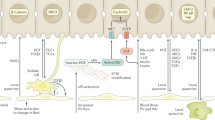Abstract
In previous studies, we reported that the age-dependent hepatotoxicity of galactosamine (GalN) was evident in hepatocytes maintained in primary cultures. Cellular proliferation and tissue repair are not manifested in response to injury in this in vitro system. Neonatal (5-day) rats have ongoing hepatocellular proliferation in contrast to adult (5-month) rats, and should be therefore resilient to GalN toxicity. Liver injury was assessed by serum transaminases (ALT, AST),3H-thymidine (3H-T) incorporation into nuclear DNA, and content of hepatocellular nuclear DNA. While the dose of 400 mg/kg did not cause any significant liver injury in the neonates, it did produce significant liver injury in adult rats. At a dose of 800 mg/kg, GalN produced significant injury in the neonates. Because 400 mg/kg causes clearly demonstrable liver injury in the adult and no injury in the neonates, this dose was used for further studies. In addition to the above measures of injury, uracil nucleotides (UTP, UDP, and UMP), glycogen, histopathology, and autoradiographic examination of liver sections were used to assess the liver injury in neonatal and adult rats. In a time-course study, all of the above were measured at 0, 12, 24, 36, 48 and 72 h after GalN administration. Serum enzyme elevations as well as the appearance of necrotic and swollen hepatocytes were maximal at 24 h in the adults rats. In contrast to these observations in the adult rats, none of these measurements indicated significant liver injury in the neonates.3H-T incorporation into nuclear DNA was much higher in the neonatal liver in comparison to the adults reflecting the difference in regeneration. Hepatocellular nuclear DNA was also higher in the neonate and was significantly decreased due to GalN treatment. In the adult rats, the quiescent normal level of3H-T incorporation and nuclear DNA content were further decreased at 12 h, increased at 48 h and returned to normal low, quiescent levels at 72 h. In the neonates mitotic activity of hepatocytes was higher than in the adult rats. In the adult rats, mitotic activity was increased at 48 h after GalN administration and returned to normal at 72 h. In the neonates GalN did not alter the mitotic activity significantly. These findings demonstrate that in the presence of hepatocellular regeneration, galactosamine toxicity is minimal while in the absence of it, clear toxicity is manifested. In conclusion, while perturbation in uracil nucleotides and related biochemical events may explain the infliction of liver injury by GalN in an age-dependent fashion, the extent of tissue repair impacts decisively on the final outcome of injury.
Similar content being viewed by others
Abbreviations
- GalN:
-
galactosamine
- ALT:
-
alanine transaminase
- AST:
-
aspartate transaminase
- 3H-T:
-
3H-thymidine
References
Abdul-Hussain SK, Mehendale HM (1991) Studies on the age-dependent effects of galactosamine in primary rat hepatocyte culture. Toxicol Appl Pharmacol 107: 504–513
Abdul-Hussain SK, Mehendale HM (1992) Biochemical studies on the age-related toxicity of galactosamine in primary rat hepatocyte cultures. Toxicol In Vitro 6: 183–189
Adelman RC (1979) Loss of adaptive mechanism during aging. Fed Proc 38: 1968–1971
Barber DJ, Fairhurst S, Horton AA (1983) Effect of old age on paracetamol-induced lipid peroxidation in rat liver. Toxicol Lett 14: 283–287
Benet LZ, Sheiner LB (1985) Pharmacokinetics: The dynamics of drug absorption, distribution, and elimination. In: Gilman AG, Goodman LS, Rall TW, Murad F (eds) The pharmacological basis of therapeutics. MacMillan, New York, pp 3–34
Berman WF, Rogers SR, Bautista JO, Segal S (1978) Galactose and glucose metabolism in the isolated perfused adult rat liver. Metabolism 27: 1721–1731
Bolla RI (1982) Current concepts. II. Hormonal regulation of molecular events during aging. Life Sci 31: 615–623
Burton K (1956) A study of the conditions and mechanisms of the diphenylamine reaction for the colorimetric estimation of deoxyribonucleic acid. Biochem J 62: 315–323
Chang LO, Looney WB (1965) A biochemical and autoradiographic study of the in vivo utilization of tritiated thymidine in regenerating rat liver. Cancer Res 25: 511–520
Chang LW, Pereira MA, Klaunig JE (1985) Cytotoxicity of halogenated alkanes in primary cultures of rat hepatocytes from normal, partial hepatectomized and preneoplastic/neoplastic liver. Toxicol Appl Pharmacol 80: 274–283
Chauveau J, Moule Y, Rouiller CH (1956) Isolation of pure and unaltered liver nuclei morphology and biochemical composition. Exp Cell Res 11: 317–321
Cuatrecasas P, Segal S (1965) Mammalian galactokinase development and adaptive characteristics in the liver. J Biol Chem 240: 2382–2386
Decker K, Keppler D (1972) Galactosamine induced liver injury. In: Popper H, Schaffer F (eds) Progress in liver disease. Vol 4, Grune and Stratton, New York, pp 183–189
Dumont JM, Macgnan MF, Janin B, Herbage D, Perrissoud D (1986) Effect of malotilate on chronic liver injury induced by CCl4 in rat. J Hepatol 3: 260–268
Dumont JM, Macgnan MF, Perrissoud D (1987) Protective effect of malotilate against galactosamine intoxication in the rat. Arch Int Pharmacodyn Ther 289: 296–310
Gude WD (1968) In: Autoradiographic techniques. Prentice-Hall, Inc. Englewood Cliffs, NJ
Jones JK, Van De Carr SW, Zimmerman HJ, Leroy A (1983) Hepatotoxicity associated with phenothiazines. Psychopharmacol Bull 19: 24–27
Keppler D, Lesch R, Reutter W, Decker K (1968) Experimental hepatitis induced byd-galactosamine. Exp Mol Pathol 9: 279–290
Keppler D, Gawehn K, Decker K (1985) Uridine 5′-triphosphate, uridine 5′-diphosphate and uridine 5′-monophosphate. In: Bergmeyer HU (ed) Methods of enzymatic analysis. Vol. VII VCH Publishers, New York, pp 439–448
Konishi Y, Shinozuka H, Farber JL (1974) The inhibition of rat liver nuclear ribonucleic acid synthesis by galactosamine an its reversal by uridine. Lab Invest 30: 751–756
Mehendale HM (1989a) Amplification of hepatotoxicity and lethality of CCl4 and CHCl3 by chlordecone. Rev Biochem Toxicol 10: 91–138
Mehendale HM (1989b) Mechanism of the lethal interaction of chlordecone and CCl4 at non-toxic doses. Toxicol Lett 49: 215–241
Reitman S, Frankel S (1957) Colorimetric methods of the determination of serum oxaloacetic and glutamic pyruvic transaminases. Am J Clin Pathol 28: 53–56
Reutter W (1975) The galactosamine refractory regeneratory rat liver. In: Lesch R, Reutter W (eds) Liver regeneration after experimental injury: III workshop on experimental liver injury, Stratton, IMBC, New York, pp 55–58
Reutter W, Bauer C, Kreisel W, Lesch R (1971) Galactosamine hepatitis in fast growing liver tissue: Studies on newborn, partially hepatectomized, and hepatoma bearing rats. Eur Assoc Study Liver 4: 173
Rikans LE (1984) Influence of aging on the susceptibility of rats to hepatotoxic injury. Toxicol Appl Pharmacol 73: 243–249
Rikans LE (1989) Influence of aging on chemically induced hepatotoxicity: role of age-related changes in metabolism. Drug Metab Rev 20: 87–110
Rikans LE, Notley BA (1982) Age-related changes in hepatic microsomal drug metabolism are substrate selective. J Pharmacol Exp Ther 220: 574–578
Roberts E, Ahluwalia MB, Lee G, Chan C, Sharma DSR, Farber E (1983) Resistance to hepatotoxins acquired by hepatocytes during liver regeneration. Cancer 43: 28–34
Rogers SR, Guerra M, Segal S (1983) Galactose metabolism in suckling and adult rat hepatocytes. Pediatr Res 17: 609–616
Rogers SR, Bovee BW, Saunders SL, Segal S (1989) Activity of hepatic galactose-metabolizing enzymes in the pregnant rat and fetus. Pediatr Res 25: 161–166
Roth GS (1979) Hormone action during aging: alteration and mechanism. Mech Ageing Dev 9: 497–514
Ruch RJ, Klaunig JE, Pereira MA (1985) Selective resistance to cytotoxic agents in hepatocytes isolated from partially hepatectomized and neoplastic mouse liver. Cancer Lett 26: 295–301
Schmucker DL, Wang RL (1980) Age-related changes in liver drug-metabolizing enzymes. Exp Gerontol 15: 321–329
Segal S, Roth H, Bertoli D (1963) Galactose metabolism by rat liver tissue: influence of age. Science 142: 1311–1313
Seifter S, Dayton S, Novic B, Muntwyler E (1950) The estimation of glycogen with anthrone reagent. Arch Biochem 25: 191–200
Sipes IG, Gandolfi AJ (1986) Biotransformation of toxicants. In: Klaassen CD, Amdur MO, Doull MD (eds) Toxicology. McMillan, New York, pp 93–96
Sokal RR, Rohlf FJ (1981) Single classification analysis of variance. In: Sokal RR, Rohlf FJ (eds) Biometry, 2nd ed, Freeman New York, pp 208–270
Spearman ME, Leibman LS (1984) Aging selectively alters glutathione S-transferase isozyme concentration in liver and lung cytosol. Drug Metab Dispos 12: 661–671
Utili R, Boitnott JK, Zimmermann HJ (1977) Dantrolene-associated hepatic injury: Incidence and character. Gastroenterology 72: 610–616
Walford RL (1980) Immunology and aging. Am J Clin Pathol 74: 247–253
Walker DG, Khan HH (1968) Some properties of galactokinase in developing rat liver. Biochem J 108: 169–175
Zieve L, Dozeman R (1989) Effect of hepatic toxins on regenerative enzymes in the liver after injury with galactosamine in the rat. J Lab Clin Med 113: 463–468
Author information
Authors and Affiliations
Additional information
Recipient of the 1988 Burroughs Wellcome Toxicology Scholar Award.
Rights and permissions
About this article
Cite this article
Abdul-Hussain, S.K., Mehendale, H.M. Ongoing hepatocellular regeneration and resiliency toward galactosamine hepatotoxicity. Arch Toxicol 66, 729–742 (1992). https://doi.org/10.1007/BF01972624
Received:
Accepted:
Issue Date:
DOI: https://doi.org/10.1007/BF01972624




